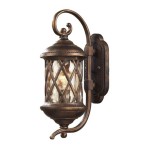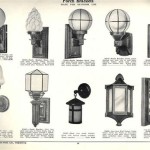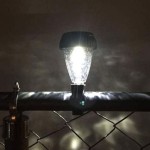Outdoor Landscape Lighting with LED: A Comprehensive Guide
Outdoor landscape lighting serves multiple purposes, enhancing the aesthetic appeal of a property, increasing safety and security, and extending the usability of outdoor spaces into the evening hours. Light Emitting Diode (LED) technology has become the dominant choice for landscape lighting due to its energy efficiency, longevity, and versatility. This article will delve into the advantages of utilizing LED technology for outdoor landscape lighting, discussing various lighting techniques, installation considerations, maintenance requirements, and emerging trends in the field.
The Advantages of LED Technology in Landscape Lighting
LEDs offer a superior alternative to traditional lighting options like incandescent or halogen bulbs. The benefits of switching to LED landscape lighting are multifaceted, catering to both practical and aesthetic needs.
Energy Efficiency: LEDs consume significantly less energy compared to their traditional counterparts. This reduced energy consumption translates directly into lower electricity bills, making LEDs a cost-effective long-term investment. The lower wattage required by LEDs also allows for more fixtures to be powered by a single transformer, simplifying the overall installation process.
Longevity: LED bulbs boast a significantly longer lifespan than incandescent or halogen bulbs. A typical LED bulb can last for tens of thousands of hours, reducing the frequency of replacements and minimizing maintenance costs. This extended lifespan is particularly beneficial in landscape lighting applications, where fixtures may be difficult or time-consuming to access for bulb changes.
Durability: LEDs are solid-state devices, meaning they are more resistant to shock, vibration, and temperature fluctuations compared to traditional bulbs with filaments. This durability makes LEDs suitable for outdoor environments, where they are exposed to various weather conditions. Their robust construction reduces the risk of breakage and ensures reliable performance over an extended period.
Color Rendering Index (CRI): LEDs offer excellent color rendering capabilities, accurately portraying the colors of landscaping elements. A high CRI allows for a more natural and vibrant appearance of plants, trees, and architectural features. This improved color rendition enhances the overall visual appeal of the landscape lighting design.
Instant On/Off: LEDs achieve full brightness instantly upon activation, without the warm-up time associated with some traditional lighting options. This instant on/off capability is beneficial for security lighting and automated lighting systems, providing immediate illumination when needed.
Dimming Capabilities: Many LED landscape lighting fixtures are dimmable, providing flexibility in adjusting the light output to suit different needs and preferences. Dimming allows for creating various moods and atmospheres within the landscape, enhancing the overall functionality and ambiance of the outdoor space.
Directional Lighting: LEDs emit light in a specific direction, allowing for precise control over where the light is directed. This directional capability minimizes light trespass, reducing light pollution and ensuring that light is focused where it is needed. It also allows for highlighting specific features of the landscape with accuracy and precision.
Landscape Lighting Techniques Using LEDs
Effective landscape lighting involves the strategic placement of fixtures to highlight specific features and create a desired ambiance. Several techniques can be employed using LED lighting to achieve different effects.
Uplighting: This technique involves positioning fixtures at the base of a tree, wall, or architectural feature and directing the light upwards. Uplighting creates a dramatic effect, emphasizing the height and texture of the illuminated object. LED spotlights are commonly used for uplighting trees, while LED wash lights are suitable for illuminating walls or fences. Proper aiming is crucial to avoid excessive glare and ensure that the light is directed effectively.
Downlighting: Downlighting involves mounting fixtures high up, such as on tree branches or eaves of a building, and directing the light downwards. This technique simulates natural moonlight, creating a soft and diffused illumination. LED path lights are often used for downlighting pathways, while LED floodlights can be used to illuminate larger areas. The spacing and height of the fixtures should be carefully considered to achieve uniform illumination and avoid creating harsh shadows.
Path Lighting: Path lighting is essential for safety and navigation, providing illumination along walkways and driveways. LED path lights are typically low-level fixtures that cast light downwards, illuminating the path without creating excessive glare. The spacing of path lights should be consistent to ensure adequate illumination and create a visually appealing effect.
Accent Lighting: Accent lighting is used to highlight specific features of the landscape, such as sculptures, fountains, or flowerbeds. LED spotlights or floodlights are commonly used for accent lighting, providing focused illumination to draw attention to these focal points. The intensity and color temperature of the light should be carefully chosen to complement the colors and textures of the illuminated object.
Wall Washing: Wall washing involves using fixtures to evenly illuminate a wall or fence, creating a soft and uniform glow. LED wash lights are specifically designed for this purpose, providing a wide beam angle and even light distribution. Wall washing can enhance the architectural details of a building and create a sense of depth and dimension.
Silhouetting: Silhouetting involves positioning a light source behind an object, creating a dark outline against a brightly illuminated background. This technique is often used to highlight the shape and form of trees or shrubs. LED spotlights or floodlights can be used for silhouetting, depending on the size and shape of the object.
Installation Considerations for LED Landscape Lighting
Proper installation is crucial for ensuring the performance, longevity, and safety of an LED landscape lighting system. Several factors must be considered during the installation process.
Voltage: LED landscape lighting systems typically operate at low voltage, such as 12V or 24V. This low voltage reduces the risk of electrical shock and allows for the use of smaller gauge wiring. A transformer is required to step down the voltage from the main power supply to the appropriate level for the LED fixtures. The transformer should be sized appropriately to handle the total wattage of all the fixtures in the system.
Wiring: Direct burial cable specifically designed for landscape lighting should be used to connect the fixtures to the transformer. This type of cable is resistant to moisture, corrosion, and physical damage. The gauge of the wire should be appropriate for the distance and the current it will be carrying to minimize voltage drop. Proper wiring connections are essential to prevent corrosion and ensure reliable electrical contact. Waterproof connectors should be used to protect the connections from moisture.
Fixture Placement: The placement of fixtures should be carefully planned to achieve the desired lighting effects and avoid creating glare or light trespass. Fixtures should be positioned to highlight specific features and create a balanced and harmonious composition. Consider the viewing angles from different locations within the property to ensure that the lighting is visually appealing from all perspectives.
Fixture Mounting: Fixtures should be securely mounted to prevent them from shifting or falling over. Stakes or mounting brackets can be used to secure fixtures in the ground. Tree-mounted fixtures should be installed with care to avoid damaging the tree. All fixtures should be installed according to the manufacturer's instructions.
Timer and Control Systems: Timers and control systems can be used to automate the operation of the landscape lighting system. Timers can be programmed to turn the lights on and off at specific times, while control systems can provide more advanced features, such as dimming and color changing. Consider utilizing a programmable timer to adjust lighting schedules based on seasonal changes.
Grounding: Proper grounding is essential for electrical safety. The transformer and all metal fixtures should be properly grounded to prevent electrical shock. Consult with a qualified electrician to ensure that the grounding is done correctly.
Weather Resistance: All landscape lighting fixtures should be designed for outdoor use and be rated for weather resistance. Look for fixtures with a high IP (Ingress Protection) rating, which indicates the level of protection against dust and water. Consider the local climate when selecting fixtures, choosing models that are suitable for the expected weather conditions.

Outdoor Landscape Lighting System Led Displays

Color Changing Waterproof Strip Lights For Outdoor Landscape Lighting

Home Decorators Collection 30 Watt Equivalent Low Voltage Brass Led Outdoor Landscape Path Light And Spot Kit 6 Pack Kecp20 The Depot

Trex Led Multifunction Light For Landscape Lighting

Taking Your Outdoor Lighting To Another Level With Dynamic Led Lights Inaray Design Group

3 Reasons Landscape Professionals Should Learn Led Lighting Design And Installation Garden Light

Led Garden Lighting Landscapes In Miami Fort Lauderdale

Hampton Bay Pearson Low Voltage Broe Integrated Led Outdoor Landscape Path Light And Flood Kit 8 Pack Iwv6628l The Home Depot

Cdpa61 5w Led Bollard Low Voltage Path Light Kings Outdoor Lighting

Color Changing Led Landscape Lights 12w Lighting Ip66 Waterproof Garden Pathway Walls Trees Outdoor Spotlights With Spike Stand Landscaping 4 Pack Com







